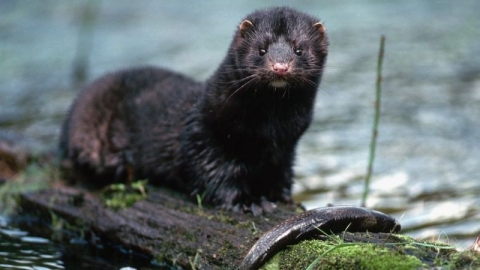Warning that non-native species pose threat to Scottish wildlife

NatureScot (Scottish Gaelic: Buidheann Nàdair na h-Alba), formerly known as Scottish Natural Heritage, is the public body responsible for Scotland's natural heritage, especially its natural, genetic and scenic diversity. They have now issued a warning that Scotland's wildlife is increasingly at risk from non-native species. NatureScot says there are more than 180 species, including 122 plants and about 60 animals, which pose threats such as killing wildlife or damaging habitats.
Some have reached Scotland from neighbouring countries and continental Europe. Others have reached Scotland on ships, or have escaped from gardens, private animal collections or zoos. There are some that have deliberately been released with little regard to the damage done to native wildlife. There are many dangers posed by the introduction of non-native species, many of which have been highlighted by the Royal Society for the Protection of Birds (RSPB).
The RSPB have pointed out the negative impact in regard to such issues as Predation - introducing new predators into an area can have devastating effects on the native wildlife and ecosystems. Competition for resources - introduced species can out-compete native wildlife for resources like food, breeding sites, space etc. Introducing new diseases - introducing new diseases can have serious consequences, as native species will not have developed immunity. Hybridisation - some species are capable of breeding with another related but distinct species, creating hybrids. Over time, the unique genetic diversity of one species can be lost and the species can become extinct.
The RSPB makes the point that: "invasive non-native species are not just a threat to biodiversity, they can also damage economic interests such as agriculture, forestry and fisheries." NatureScot have also said: "non-native species were one of the biggest threats to Scotland's wildlife, and cost industries like agriculture and forestry hundreds of millions of pounds each year." The agency aims to prevent their introduction and spread in the first place. Where species have become established they can be very harmful. For example the mink found in Scotland have been described as a "voracious predator" and are descended from those that escaped or were deliberately released from fur trade farms in the 1950s and 60s.
In regard to the mink there has been an effort to eradicate them from some areas. Trapping undertaken by the Hebridean Mink Project in the Western Isles of Scotland has met with some success. Their numbers have been reduced to "very low" in Lewis and Harris, where no young mink have been caught since 2015. The animals have also been "largely removed" from Uist. It is, of course, not only mink but a variety of other animals, marine species and non-native plant life that can cause problems. There have been some careful successful re-introductions of some species that have been native in the past. However, the overall message appears clear that the accidental or deliberate introduction of non-native species, no matter how naively undertaken, can have far reaching and damaging consequences.
Image: Mink courtesy of Getty Images





